
99
HNUE JOURNAL OF SCIENCE
Educational Sciences 2024, Volume 69, Issue 5B, pp. 99-108
This paper is available online at http://hnuejs.edu.vn/es
DOI: 10.18173/2354-1075.2024-0138
TEACHING PROCESS OF A RIGHT PRISM IN GRADE 7 TO DEVELOP
MATHEMATICAL COMMUNICATION COMPETENCE FOR STUDENTS
Vuong Vinh Phat
Faculty of Education, An Giang University, Vietnam National University, Ho Chi Minh City,
Ho Chi Minh city, Vietnam
*Corresponding author: Vuong Vinh Phat, e-mail: vvphat@agu.edu.vn
Received May 20, 2024. Revised October 22, 2024. Accepted December 27, 2024.
Abstract. In the 2018 Mathematics General Curriculum, the content of mathematics is
integrated into three branches of knowledge: numbers, algebra, and elements of analysis;
geometry and measurement; and statistics and probability. In grade 7, geometry and
measurement focus on shapes in practical contexts. Moreover, mathematical communication
competence is one of the core competencies outlined in the 2018 Mathematics General
Curriculum. This article introduces a method for developing students' mathematical
communication competence through lessons on triangular and quadrilateral right prisms in
grade 7. The study involves designing a math teaching process comprising four phases: Phase 1:
Students work individually to answer Worksheet 1; Phase 2: Students work in pairs to answer
Worksheet 2 (identical in content to Worksheet 1); Phase 3: Students work in groups of four
to answer Worksheet 3 (identical in content to Worksheets 1 and 2); Phase 4: Students apply
the knowledge from the previous phases to create a vertical prism with a known base and
height by individually answering Worksheet 4 (similar in content to Worksheet 1). Data,
including recordings and answer sheets, were collected from 11 grade 7 students. The data
was analyzed quantitatively and qualitatively to assess the development of students'
communication skills. The research findings demonstrate that this method is an effective
teaching process. It not only helps students solve problems but also enhances their
communication competence. Students learn to observe and draw a plane shape of a prism on
A4 paper, cut out the shape, and fold it to create a vertical prism.
Keywords: right prism, competence, mathematical communication competence, students.
1. Introduction
In the 2018 Mathematical General Education Program, the content of grade 7 mathematics
underwent significant changes in the Geometry and Measurement section. Previously, 7th-grade
math focused on plane geometry. Math 7, Episode 1, introduced perpendicular lines, parallel lines,
and triangles, while Episode 2 covered the relationships among elements in a triangle and the
concurrent lines of a triangle. In contrast, the current Math 7 curriculum dedicates Chapter 3 in
Episode 1 to practical shapes such as rectangular prisms, cube prisms, triangular prisms, and
quadrilateral right prisms. It also addresses triangles and the relationships among their elements.
Thus, the 2018 curriculum emphasizes spatial geometry and the creation of 3D figures from flat shapes.
In Vietnam, several research studies have focused on teaching mathematics to develop
students' mathematical communication competence (Hoa Anh Tuong, 2014; Vu Thi Binh, 2016) [1], [2].

Vuong VP
100
These studies employed open-ended problems, lesson studies, and mathematical representations
to enhance students' written mathematical communication skills. Another study by Uyen et al.
(2021) focused on developing the mathematical communication abilities of 8th graders learning
congruent triangles. This study emphasized three factors: mathematical vocabulary, mathematical
representation, and explanatory reasoning [3]. The most recent research by Nguyen Ai Quoc
(2022) explored the use of scientific debate as a teaching method to develop components of
students' mathematical communication competence [4].
Internationally, Ping (2001) [5] and Chisu (2016) [6] utilized lesson study to examine the
role of verbal communication in assessing students' mathematical understanding. Kilpatrick et al.
(2005) [7] investigated communication and the construction of mathematical meaning through
mathematical software. Haji and Ilham (2016) [8] explored students' communication abilities in
solving practical problems.
Although there are numerous studies on developing students' mathematical communication
skills, research addressing the development of these skills during the transition from plane
geometry to spatial geometry in the new 7th-grade mathematics program remains unexplored.
In this study, we present a theoretical synthesis of communication, mathematical
communication, and mathematical communication competence. Subsequently, we propose a
process for teaching mathematics that aims to develop students' mathematical communication
abilities, applying this process to a right prism lesson in grade 7. The experimental results validate
the effectiveness of the proposed teaching process, aligning with the goal of enhancing students'
quality and competence.
2. Content
2.1. Mathematical communication and mathematical communication competence
2.1.1. Communication concept
The term "communication" originates from the Latin word communicare, meaning "to share"
or "to make known" (Cherry, 1978) [9]. According to the Oxford Dictionary, communication is
defined as the activity or process of expressing ideas, feelings, or providing information to others
(Wehmeier et al., 1997) [10, p. 291]. From a psychological perspective, communication is an
interactive process between individuals that establishes psychological contact, enabling the
exchange of information and emotions, mutual perception, and influence (Nguyen Xuan Thuc
et al., 2017) [11, p. 56-57].
2.1.2. Mathematical communication
In their work, NCTM (2000) introduces the topic of communication as follows:
"Communication is an essential part of mathematics and mathematics education. It is a way of
sharing ideas and clarifying understanding. Through communication, ideas become objects for
reflection, refinement, discussion, and amendment. The communication process also helps build
meaning and permanence for ideas and makes them public" [12, p. 60].
In mathematics education, "Teachers must help students clarify their statements, focus
carefully on problem conditions and mathematical explanations, and refine their ideas" (NCTM,
2000, p. 351). Teachers should provide opportunities for students to discuss mathematical ideas
and listen to their peers, as this enhances their understanding of mathematical problems.
Consequently, the goals of learning mathematics include developing the ability to: (1) solve
mathematical problems, (2) communicate mathematical ideas, (3) reason and prove
mathematically, (4) make mathematical connections, and (5) create mathematical representations
(NCTM, 2003) [13].

Teaching process of a right prism in grade 7 to develop mathematical communication competence for students
101
Emori (2008) [14] suggests that mathematical communication, in its narrow sense,
encompasses listening, speaking, reading, and writing about mathematics. In its broader sense,
mathematical communication includes listening, speaking, reading, writing, problem-solving,
argumentation, and making connections in teaching mathematics [14, p. 74]. In this study, we
adopt Emori's broader perspective, where reasoning and problem-solving are regarded as essential
components of mathematical communication. Writing and discussion are two critical elements of
mathematical communication. Writing is viewed as a means for individuals to think, explain
mathematical ideas in detail, and develop problem-solving strategies. Similarly, discussion
among students facilitates the process of thinking and verbalizing their mathematical
understanding.
2.1.3. Mathematical communication competence
One of the standards for designing programs and organizing math learning activities, as
outlined by NCTM (2000), is the promotion of mathematical communication. The math
curriculum should be structured to ensure that every student has the opportunity in order to
- Organize and consolidate their mathematical thinking through communication;
- Communicate their mathematical thinking coherently and clearly to peers, teachers, and others;
- Analyze and evaluate the mathematical thinking and strategies of others;
- Use the language of mathematics to express mathematical ideas precisely.
According to NCTM (2000), mathematical communication competence refers to students'
ability to present, express, explain, and share mathematical content, as well as their ability to
receive the presentation, expression, explanation, and sharing of mathematical content.
The general education program in mathematics defines four components of students' ability
to communicate mathematically: (1) The ability to listen, understand, read, and record
mathematical information; (2) The ability to present and express ideas; (3) The ability to use
mathematical and natural language effectively; and (4) Confidence in communication.
The 2018 general education program in mathematics further describes mathematical
competence using terms such as listening comprehension, reading comprehension, recording
information, presenting and expressing ideas (both orally and in writing), and effectively using
language to present, explain, and evaluate mathematical concepts (Do Duc Thai, et al., 2020) [15, p. 16].
2.2. Mathematics teaching process to develop students' mathematical communication
competence
Drawing from various effective math teaching processes aimed at deepening students'
understanding of mathematical concepts, such as the teaching process of Arsac et al. (1992) [16],
the ACODESA teaching process by Hitt and González-Martín (2015) [17], and the teaching
process incorporating a scientific debate phase to enhance students' mathematical competence by
Vuong Vinh Phat (2021) [18], we propose a teaching process focused on developing students'
mathematical communication capacity as follows:
Stage 1: Individual work.
Each student is given Worksheet 1 and answers the questions independently.
Stage 2: Working in pairs.
Students are randomly grouped into pairs (or occasionally groups of three) to answer
questions collaboratively. Each pair is given Worksheet 2, which contains the same content as
Worksheet 1.
Stage 3: Working in groups of four.

Vuong VP
102
Students are randomly grouped into teams of four (or occasionally three or five) to answer
the questions collaboratively. Each group is given Worksheet 3, which contains the same content
as Worksheet 1. The results from Stages 2 and 3 provide opportunities for teachers to evaluate
students' verbal communication competence.
Stage 4: Apply knowledge.
At this stage, the teacher assigns students an individual problem in class. This problem is
similar to those in Stages 1, 2, and 3. The purpose is to allow students to reapply their knowledge,
consolidate their understanding, and deepen their grasp of mathematical concepts. This activity
also enables teachers to analyze and evaluate students' written mathematical communication
competence.
This process is similar to previous teaching processes in Stages 1, 2, and 4 but differs in
Stage 3, where the focus shifts from scientific debate to student discussion.
2.3. Teaching the illustration of "Triangle right prism and quadrilateral right prism"
(Math 7, episode 1) to develop mathematical communication ability for students
2.3.1. Triangle right prism and quadrilateral right prism
In the 2018 Mathematical General Education Program, the Geometry and Measurement
section for grade 7 is presented in Chapter 3: Real-life Shapes, and Chapter 4: Parallel Angles and
Lines. The content of Chapter 3 includes concepts related to rectangular solids, cubes, triangular
right prisms, and quadrilateral right prisms, focusing on calculating their surface area and volume.
In Textbook of Mathematics 7, Volume 1 (Tran Nam Dung et al., 2022) [19, p. 56-57], there
is a mathematical activity titled "Creating a triangular right prism and a quadrilateral right prism".
The activity consists of the following steps: Step 1. On a piece of cardboard (or A4 paper), draw
a flat layout of the right prism; Step 2. Cut out the cardboard layout and fold it to form a vertical prism.
Figure 1. Triangular right prism
Experimental content
Stage 1: Students work individually to answer the questions in worksheet No. 1. Time:
15 minutes.
WORKSHEET NUMBER 1
Problem: Create a quadrilateral right prism with measurements as shown in Figure.
Calculate the height and area of the base of the prism.

Teaching process of a right prism in grade 7 to develop mathematical communication competence for students
103
Stage 2: Students work in pairs. Each group of two students is randomly selected to answer
the question in worksheet No. 2. The content of the question in sheet 2 is the same as in sheet 1.
Time: 15 minutes. When students discuss and answer questions, the teacher records the discussion
process for each group.
Stage 3: Students work in groups of four. Each group has four students randomly selected to
answer the question in worksheet 3. The content of the question in sheet 3 is the same as in sheet 1.
The time: 15 minutes. When students discuss and answer questions, the teacher records the
discussion process for each group.
Stage 4: Students work individually to answer the questions in worksheet No. 4. Time: 20 minutes.
WORKSHEET NUMBER 4
Problem: Create a triangular prism whose base is an isosceles triangle with three sides of
5 cm, 4 cm, and 4 cm and a height of 6 cm, respectively.
2.3.2. Respondents and research tools
* Respondents
The experiment was conducted during the first semester of the 2022–2023 academic year.
The experimental group consisted of 11 grade 7 students who were randomly selected from a
secondary school. These students are labeled HS1, HS2,..., and HS11. In Stage 2, the pairs were
designated as N1, N2, N3, N4, and N5. In Stage 3, the groups of four were labeled G1, G2, and G3.
* Research tools
The research tools included students' worksheets and audio recordings of their discussions.
2.3.4. Methods of data collection, data analysis, and results evaluation
The collected data included audio recordings and individual answer sheets from students in
Stages 1, 2, 3, and 4. Based on this data, we assessed students' mathematical communication
abilities as follows:
- Scoring students' individual work in Stages 1 and 4 and comparing these results.
- Comparing the results of individual work (Stage 1) with group work (Stages 2 and 3).
This quantitative assessment focused on students' written communication abilities, with
initial results indicating the development of their mathematical communication skills.
- Analyzing the development of students' verbal communication skills in Stage 2 (pair work)
and Stage 3 (group work).


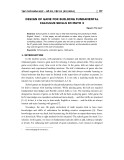

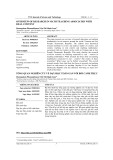

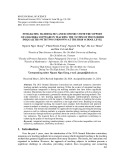
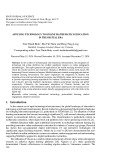

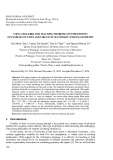
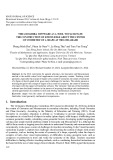

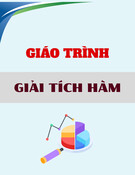
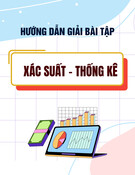
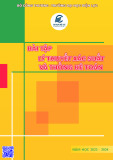






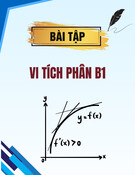
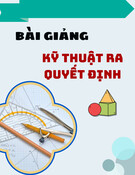
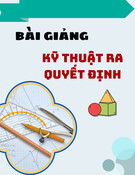
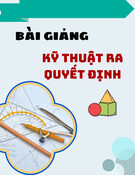
![Quyển ghi Xác suất và Thống kê [chuẩn nhất]](https://cdn.tailieu.vn/images/document/thumbnail/2025/20251030/anh26012006/135x160/68811762164229.jpg)
